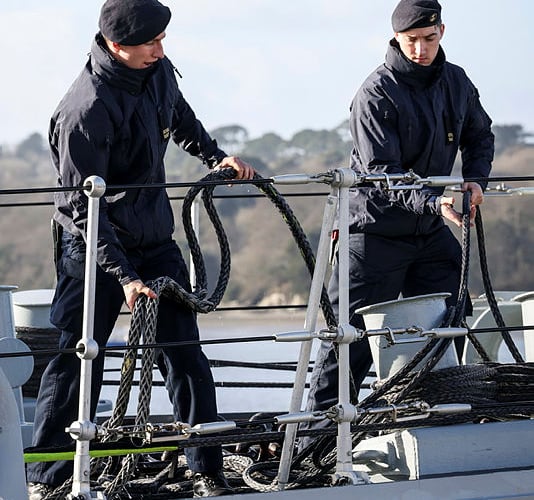HMS Sutherland has returned to sea after nearly four years following a major overhaul in Devonport dockyard.
The ship is the final Type 23 frigate to receive the life extension upgrades in the hands of defence firm Babcock – allowing her to continue in service into the mid-2030s alongside her sisters.
Sutherland sailed from Devonport to begin sea trials and training ahead of re-joining the Royal Navy fleet and serve on operations around the globe – namely on submarine hunting missions in the North Atlantic.
The ship underwent a full structural survey and a major upgrade, including more than 800 inserts and 11,500 weld repairs, demanding more than five kilometres of welding.
As a fighting machine, ‘The Fighting Clan’ has also received an upgraded 2150 sonar system, requiring the removal of the sonar bow dome – a major lifting operation involving specialist support.
She is also the last ship in her class to receive the Sea Ceptor missile system – now proven in action after HMS Richmond downed drones in the Gulf last year.

“HMS Sutherland has benefitted from a signification modernisation and extension of key weapons, sensors, and equipment in this extensive refit,” said the ship’s Commanding Officer, Commander James Wallington-Smith.
“This accomplishment is down to the hard graft and considerable efforts of both the ship’s company and Babcock working closely together to deliver success.
“The ship and her crew are now ready to continue the next stage of trials and training.”
Prior to her return to sea, Babcock handed over the ship to the Royal Navy in a small ceremony onboard before she continued down the River Tamar into Plymouth Sound.
Sir Nick Hine, Chief Executive of Babcock’s Marine Sector, said: “After a significant upkeep programme, it is fantastic to see HMS Sutherland starting sea trials and well on her way to achieving full capability before re-joining the fleet.”




